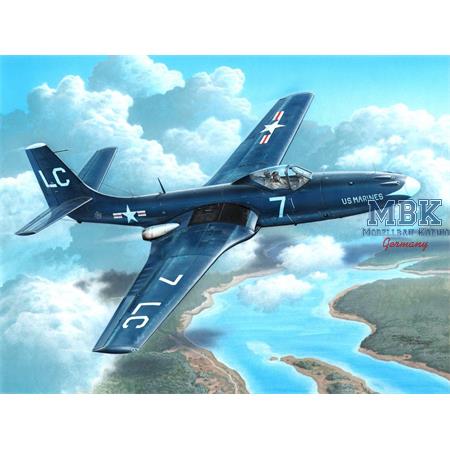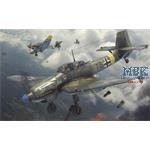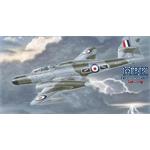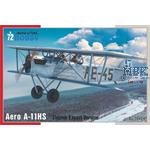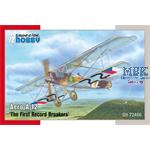McDonnell FH-1 Phantom "MARINES first Jet"
SH72335
Special Hobby
1:72
The McDonnell company was founded in 1939 and received its first order in 1940 to produce sub-assemblies for other manufacturers.
In January 1943, however, the McDonnell design team received a new order. The US Navy commissioned the construction of a jet fighter to be known as the FD-1, which was renamed the FH-1 in 1947 (in the US Navy system, the letter D denoted the Douglas company).
The team led by K. Perkins proposed a concept for a monoplane with straight wings of all-metal construction. The engines were supplied by Westinghouse.
Before the overall concept of the aircraft was clear enough, up to eight engines per aircraft were considered. In the end, a more conventional design with two engines on each side of the fuselage was chosen. The aircraft was fitted with six machine guns in the nose section and the military call name Phantom was chosen.
The Model 19 engines proved to be insufficiently powerful and also quite unreliable.
However, the prototype XFD-1 began its taxi tests with this type of engine, or to be more precise, with only one.
On 26 January 1945, an accidental jump occurred during taxiing, which was considered the first take-off of the type.
Flight testing lasted until 1 November 1945, when the aircraft crashed and its pilot, W. Burke, was killed. These were indeed hard times for the company.
The original order of 100 examples of the aircraft was reduced to only 30 machines by the end of the war, but eventually as many as 60 machines were ordered. Flight tests continued with the second prototype. During these tests, the very first landing and subsequent take-off from an aircraft carrier took place, making the Phantom the first jet aircraft in the Navy to reach this milestone.
The production aircraft differed from the prototypes in having an angled vertical stabiliser, a simplified windscreen, enlarged fuel tanks and the ability to carry an additional tank under the nose.
The FH-1 Phantom did not see long service in the first line, it was soon transferred to Naval Air Reserve units at various Naval Air Stations throughout the USA, and in 1955 the Phantom was retired from active service.
In 1964, two aircraft and another for spare parts were used by Progressive Aero Inc. for civilian jet pilot training.
Plastic model kit
- Decals for four US Marines aircraft that operated from aircraft carriers
- with photoetched parts
unbuilt / unpainted
Schreiben Sie jetzt Ihre persönliche Erfahrung mit diesem Artikel und helfen Sie anderen bei deren Kaufentscheidung
